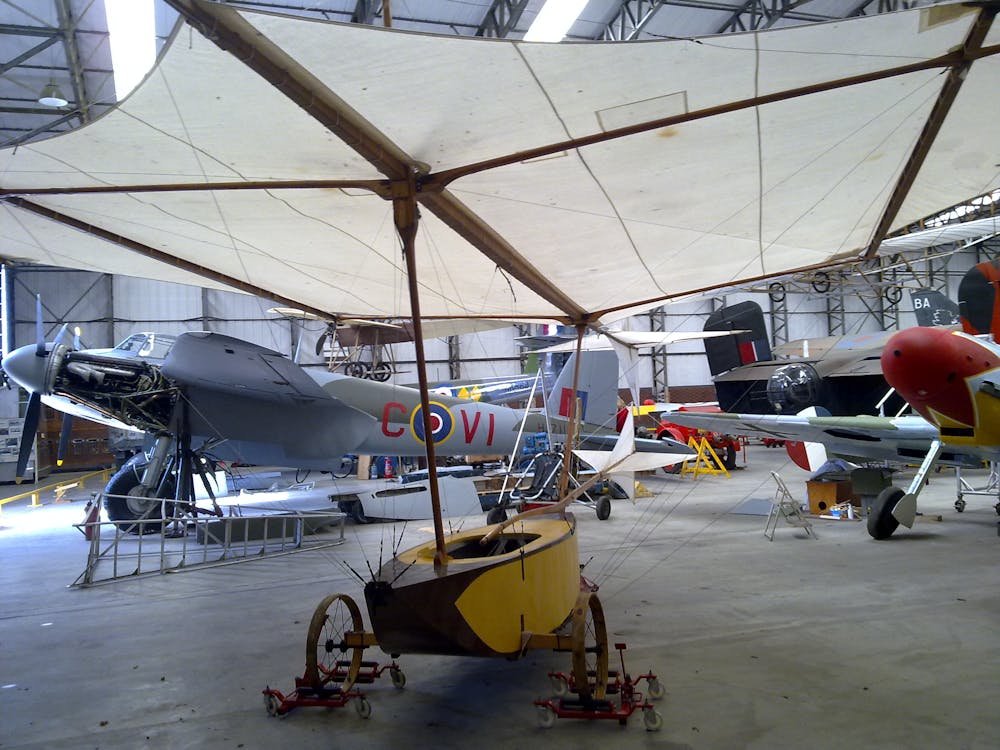Diving into where art meets engineering, the craft of aerial artifacts takes flight. These are not mere models but detailed accounts of our history, intricately designed and painstakingly crafted. This blog post ventures high above the clouds to explore the world of artifacts that echo the wonders of aviation, attracting enthusiasts and collectors who are captivated by the feats of the airborne.
Whether you’re an experienced pilot, an art aficionado, or simply one who is enamored by the grace of wings, read on and discover the artistry and passion that are woven into aerial artifacts.
Defining the Craft of Aerial Artifacts
Aerial artifacts showcase our fascination with flight, ranging from early biplanes’ graceful curves to modern jets’ complex designs. These precision-crafted pieces are more than just visual wonders; they carry stories, inspire, and remind us of our technological progress.
Each artifact represents a labor of love and a piece of history. The balance between form and function in aviation is mirrored in how these machines are recreated, capturing their essence and the spirit of human creativity and ambition.
History and Evolution of Aerial Artifacts
The fascination with flight has always been part of human history, leading from dreams of soaring like birds to the Wright brothers’ first flight in 1903. This achievement inspired artists and craftsmen to create replicas of their flying machines.
Initially, these aerial replicas were crudely built, driven by curiosity more than industry standards. Over time, however, artists and artisans mastered the craft, producing high-quality replicas that reflected the advances in materials and engineering. These artifacts show the evolution of aviation, mirroring changes in society and technology.
The Makers Behind the Masterpieces
The art of aerial artifacts combines craftsmanship, history, and artistic skill, showcasing a range of influences and techniques. Profiles of renowned artists and craftsmen highlight their role in bringing to life the visions of pioneers and designers’ dreams. From skilled woodworkers who shaped the early planes to contemporary fabricators and sculptors, these creators extend the limits of their crafts to depict the complexity of flight. Noteworthy figures in this domain are guardians of tradition, skilled in both their craft and in preserving the stories behind each artifact.
Showcasing Diverse Aerial Artifacts
The aerial artifacts in collections and galleries cover the spectrum of aircraft history, from early aviation to modern advancements. A visual display of these pieces would showcase iconic models, some depicted in flight, others as static exhibits. Materials range from shiny riveted aluminum to softer fabrics covering delicate wings. Each piece’s unique colors and markings authenticate its era. Exploring such a gallery offers a journey through time via the evolution of flight.
From Concept to Creation: The Artistic Process Unveiled
The path from inspiration to the finished aerial artifact is a narrative in itself. Each piece begins with meticulous research into the aircraft, a deep study of its history, and a conceptualization of how best to capture its essence. Prototyping often involves the exploration of innovative construction methods to achieve the desired result.
The artist then enters a phase of intense labor, where hours of sculpting, welding, painting, and assembly turn raw materials into a polished artifact. The process is imbued with a sense of purpose, as the artist seeks to honor not just the design but also the intent of those who first conceived the aircraft.
Collecting and Investing
For many, aerial artifacts, including airplane models, are more than decorations; they are investments in history and culture. The scarcity of certain artifacts, alongside the prestige of their models, can make them valuable commodities. Collectors seek not only the beauty of form but a story that resonates with their passion for aviation.
The market for aerial artifacts is dynamic, with pieces reflecting significant moments in aviation often commanding high prices. From the pioneering exploits of the early aviators to the icons of modern aviation, these artifacts offer collectors a tangible piece of the past that also looks to the future of flight.
Enhancing Spaces and Telling Stories
A well-planned exhibition or curated display can transport viewers to the time and place an aircraft symbolizes. Aerial artifacts transform spaces, turning a simple room into a shrine of aviation legends or a corporate area into a tribute to human endeavor. Whether in a private study or public plaza, each piece tells its own story, sparking conversations and inspiring those who see it. Aerial artifacts serve a dual purpose, not only as aesthetic pieces but also as educators and storytellers of the histories they represent.
Innovations and Trends in Aerial Artifacts
The aviation world thrives on constant innovation, much like the realm of aerial artifacts. Advances like 3D printing are empowering artists to replicate even the most complex details accurately. These breakthroughs are pushing the boundaries of what’s possible in precision and scale.
Moreover, the way we collect and display aerial artifacts is changing. There’s a shift towards interactive exhibits that allow visitors to see, touch, and sometimes even board replicas. This hands-on approach deepens visitors’ connection with the artifacts and aviation history.
Conclusion
Now that you have explored the rich history and evolution of aerial artifacts, you can truly appreciate how these pieces encapsulate our fascination with flight. The dedication, skill, and creativity of artists and craftspeople make it possible for us to bring the past into the present and keep our love for aviation soaring high. As long as there are planes in the sky, there will be people working tirelessly to capture their essence in art, ensuring that the beauty of flight is always within our reach.
So whether you’re a collector, an aviation enthusiast, or simply someone who appreciates the wonders of human ingenuity and imagination, take a moment to admire the aerial artifacts around you and let them transport you into the world of flight.
Suggested reads: The Untold Story of Finlo Clarkson: Car Accident, Siblings, and What Happened to Him
